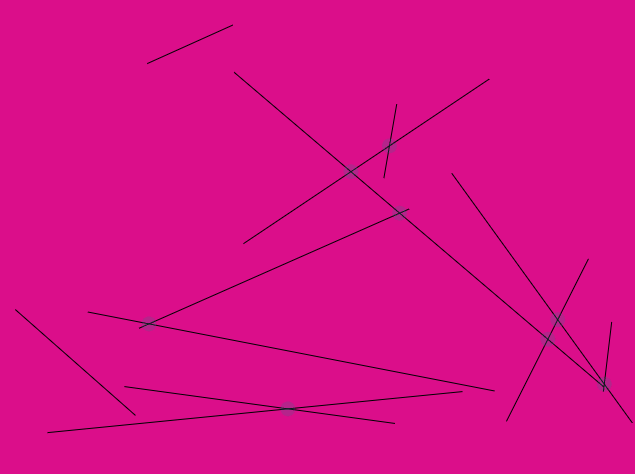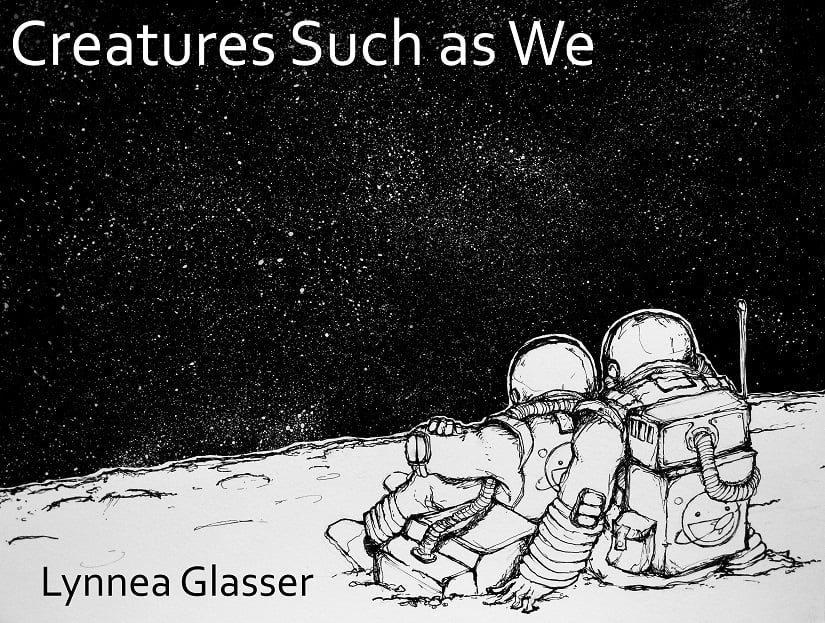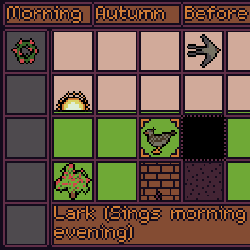https://editor.p5js.org/ilovit/sketches/8x8IAtWRG

60212: INTERACTIVITY & COMPUTATION
CMU School of Art, Fall 2019 • Prof. Golan Levin

https://www.choiceofgames.com/creatures-such-as-we/#utm_medium=web&utm_source=ourgames
For this Looking Outwards, I'd like to share a charming text-based adventure game site I found around 2009 and my favorite game from their collection. Choice of Games is a company that produces and hosts text-based adventure games created using their scripting language ChoiceScript. I like these works because they are lengthy, well-written, fantasy-esque games with meaningful choices, but there are a couple interesting characteristics about this platform that are relevant to this class.
First is how Choice of Game hosts curated user-created games written with ChoiceScript. I find this relevant to how media art seeks to be completely democratized and accessible, but I am reminded of a post I saw a long time ago complaining about ChoiceScript ruining the sanctity of text-based adventures. This makes me wonder why creative technology seems particularly prone to gatekeeping. Perhaps this is more because art in general is prone to gatekeeping, but its exclusiveness is highlighted when juxtaposed with technology's affinity for mass adoption.
Second, I cannot help drawing comparisons to Twine and wondering why Twine has become the creative's tool of choice rather than ChoiceScript. The most straightforward conclusion is that ChoiceScript is created specifically for text-based adventure games, whereas Twine broadly supports choice-based games in general. HTML, CSS, and visual languages are all tools supported by Twine. With ChoiceScript, narrative trees and eloquence are the only tools available. To me, I don't see this as a downside because these tighter constraints make for rich storytelling, but it definitely falls short on interactivity and functions more as a novel.
What I desire more from Choice of Games are narratives that are not standard fantasy-adventure stories but more introspective or exploratory. This is why I link Creatures Such as We as an example instead of one of their more popular games like Choice of the Cat. (Yes, it's exactly what you'd expect). Creatures Such as We is "a philosophical interactive romance novel by Lynnea Glasser" about video games on the moon. I don't have any justification for liking this story besides I'm a sap.

"The Purpose of Water" is a browser game that Stephen Lavelle made in a month. It is one of the many small games that he publishes for free on his website. It's a kind of puzzle game, but an obtuse one, where the real puzzle is figuring out how to interact with the logic of the game. All the pieces are packed with symbolism which doubles as game logic, so the solution to the puzzle is also the story being told. The way all the parts interact is so elegant and complete that the experience lasts after you finish the relatively short amount of time it takes to play. The ending is especially impactful in how it uses the vocabulary that the rest of the game introduces to deliver something genuinely meaningful and surprising.
To create it, he used a free programming library called Haxegon, but presumably created the game logic himself. The Pixel art aesthetic and grid based format seems inspired by old video games, and the content has references to folklore.
The project points to other ways simple game logic can be harnessed for powerful symbolism.

"The Purpose of Water" by Stephen Lavelle
https://www.increpare.com/game/the-purpose-of-water.html
2. The Critical Engineer raises awareness that with each technological advance our techno-political literacy is challenged.
As technology becomes more ubiquitous, it also becomes more invisible. We become less aware of the sociopolitical ramifications of ubiquitous technology simply because we no longer can imagine an alternative. We are conditioned to accept technology as the status quo, overlooking its implications for the benefits that are marketed toward us. One can simply look at the rise of the Internet and social media platforms to see how a widely accepted technology has convinced many people to sacrifice their privacy without much thought.
I find it interesting that this manifesto highlights this explicitly because it brings to light an invisible yet incredibly influential consequence of technology. The point itself aligns with how much of the Critical Engineer's work is simply to expose these invisible consequences of widely accepted technology.
Project: Lingdong Huang, CMU 15-112 Term Project: Hermit (2015)
Link to Video: https://www.youtube.com/watch?v=mPYeTJd8klQ
Link to GIF: https://giphy.com/embed/XBuy5KwySYOAruoFrN
<iframe src="https://giphy.com/embed/XBuy5KwySYOAruoFrN?video=0" width="480" height="274" frameBorder="0" class="giphy-embed" allowFullScreen></iframe><p><a href="https://giphy.com/gifs/XBuy5KwySYOAruoFrN">via GIPHY</a></p>
Lingdong Huang, Hermit (2015)
One person, Lingdong Huang , was involved in the making of this project. What is particularly inspiring about this project is that its creator is not (or at least, wasn't at the time) a professional artist, but rather a fellow CMU student. I assume it took Huang only a few weeks to complete this simulation, as I also took 15-112 and am familiar with the term project. Huang used Python code to create this project, and was likely inspired by preexisting procedural generation projects which mimicked nature.
I was shown this video when I was a senior in high school by a student when I came to visit CMU. The combination of aesthetics and algorithmic complexity of this project left a lasting impression which led me to apply to CMU. I was drawn to the minimalistic yet effective use of monochromatic tones to evoke a quiet, fantastical atmosphere; the usage of simple polygons in specific ways to create organic, life-like creatures. The usage of building a "skeleton" in order to animate the creatures can be seen in Lingdong's later work, doodle-place, which was shown in Lecture today.